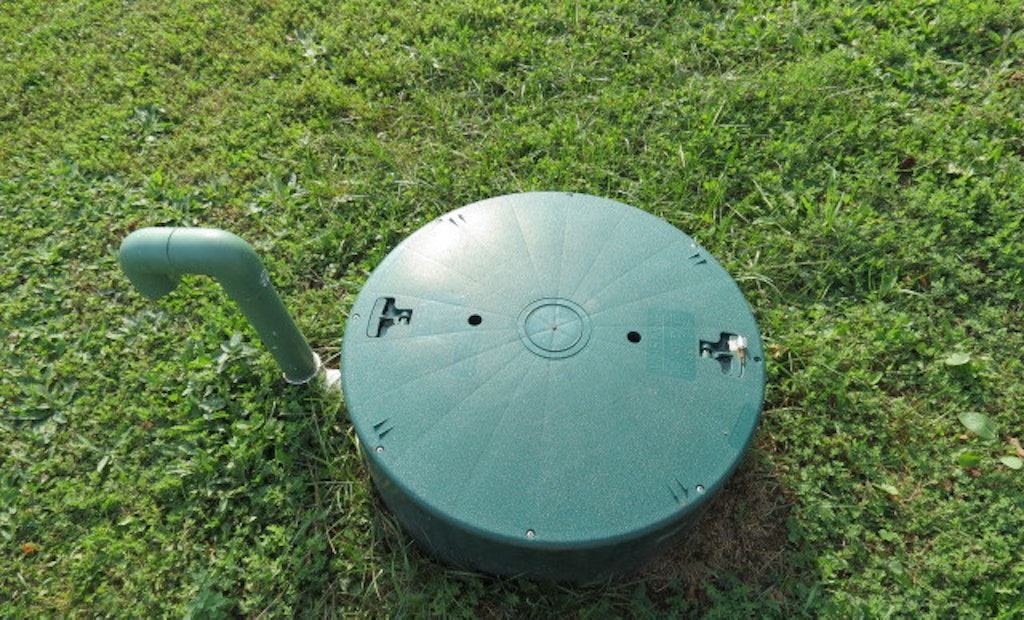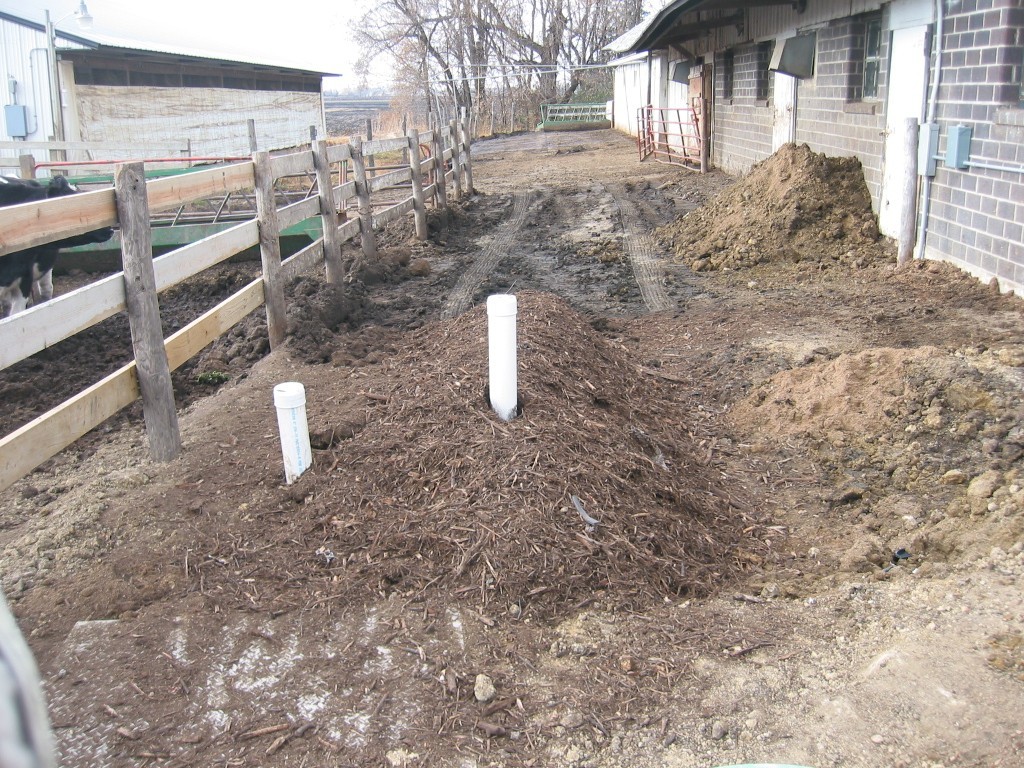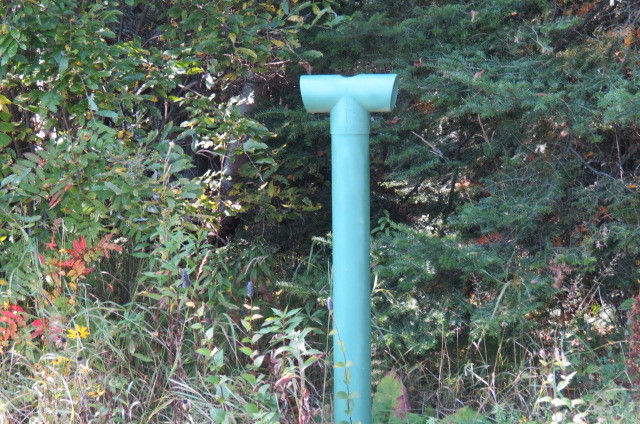
Occasionally tanks may have goosenecks to vent the gasses by the septic tank, which will allow gasses to escape naturally from the tank.
Septic odors outside a home are particularly annoying when owners are trying to enjoy their property, and at commercial properties odors can create concerns with the public. Septic or sewer gas odors are not typically found in high enough concentrations to be dangerous but are still a nuisance.
To troubleshoot these odors, it is helpful to identify where the odor is originating from.
1. Odors near the house could be caused by a broken sewer pipe, or simply the wind pattern around the building. If the yard in general smells of septic or sewer gas, it may be that the plumbing vent pipe on the structure or a neighbor’s structure needs to be extended to diffuse the odors. Properties located in valleys, forested areas or low areas may not have appropriate wind patterns to carry the odors away from the living areas and the yard. As the wind blows over the house, the air currents that are supposed to carry the gases up and away can instead carry the sewer gas down into the yard. Extending the vent pipe can help diffuse the odors, carrying them away from the yard. Carbon filters can also be placed on the top of the vent to help control odor. The filters do need to be changed regularly (typically annually) to be effective. It is important that these filters not obstruct the flow of air. Also, in cold climates these filters can collect moisture in the winter and freeze, which will cause septic odors in the building; so they are typically removed during the cold season.
2. For odors near the septic tank:
a. The first step is determining where the tank is designed to vent. If it is supposed to vent back through the structure (this is typical), the gases may not be allowed to vent properly if the building sewer lines are clogged or holding wastewater. Occasionally tanks may have goosenecks to vent the gasses by the septic tank, which will allow gasses to escape naturally from the tank. This will create odor in the yard and can be mitigated by venting through a biofilter or installing a carbon filter.
b. Next, assess the maintenance access points and inspection pipes. Typically, plastic lids have a rubber seal which helps keep odors in the tank; these can get damaged over time and need replacement. If a concrete lid is leaking odors out of the maintenance hole, weather stripping or other materials can be used to create a temporary seal that will contain odors but still allow for proper maintenance of the tank. This seal will need to be replaced after maintenance. A thin layer of mulch can be placed over lids to absorb some the odor, but the lid should not be covered with soil as the tank is maintained by having access at grade. Inspection pipes (typically 4 to 6 inches in diameter) should have tight-fitting covers that if damaged can release gasses.
c. Lastly determine if the septic system needs maintenance. Sometimes pumping the tank can eliminate the odor issue. Septic additives are not recommended to reduce odor as there is no independent research that verifies effectiveness and there is a risk of upsetting the natural activity in the septic system.

3. Odors near a pretreatment unit — Pretreatment devices include aerobic treatment units, constructed wetlands, and media filters. If a septic odor is persistent around one of these pretreatment units, the system may not be performing properly, and the manufacturer or designer should be contacted to determine the best course to remedy the situation. There should not be septic odor around these units if they are performing properly. With systems that are overloaded from time to time, are vented, and still have odors that are troublesome it may be wise to adjust the loading or pass that vent through a wood chip biofilter or carbon filter.
4. Odors near a pump/dosing tank — Assure the maintenance access lid is secure and properly sealed (see septic tank entry 2b, above). In addition, check if the wiring/conduit leaving the pump tank is plugged to ensure septic gas is not leaking from this location.
5. Odors near the soil treatment area — If there are strong odors in the soil treatment area it can indicate a problem with that part of the system. All inspection pipes should be checked to make sure the pipes are not broken and that they are covered with a secure cap. A visual inspection of the entire area should be performed to determine if there are any wet or spongy soil areas indicating that sewage is coming to the surface. If any of these conditions are found, humans and animals can encounter sewage. This is considered a public health threat and must be corrected immediately.

About the author
Sara Heger, Ph.D., is a researcher and educator in the Onsite Sewage Treatment Program in the Water Resources Center at the University of Minnesota, where she also earned her degrees in agricultural and biosystems engineering and water resource science. She presents at many local and national training events regarding the design, installation and management of septic systems and related research. Heger is the president-elect of the National Onsite Wastewater Recycling Association and she serves on the NSF International Committee on Wastewater Treatment Systems. Ask Heger questions about septic system design, installation, maintenance and operation by sending an email to kim.peterson@colepublishing.com.





